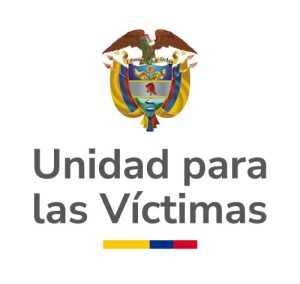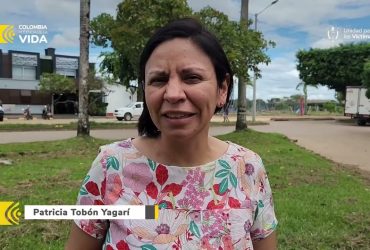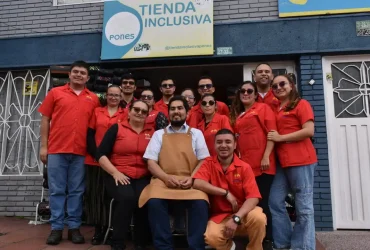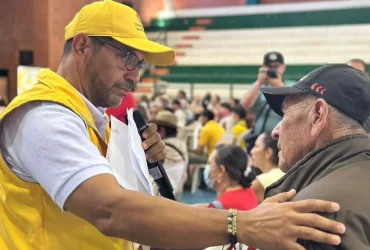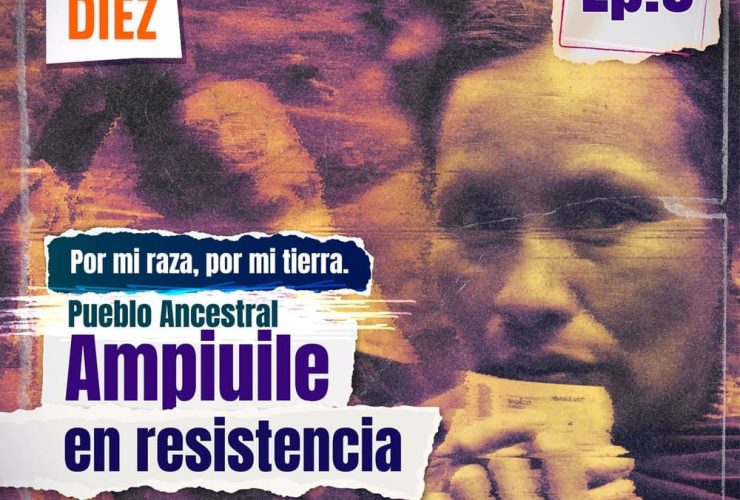By Luz Jeny Aguirre
“We are telling the story by miracle,” says Mario Chauza. His fingers aren’t enough to count how many neighbors and peasants died because of the war in Pradera fertile lands. And yet, with nostalgia seen time to time in his words, his story is governed, incredibly, by hope.
On the second floor of a house that means a lot – and we are going to talk about that –, sipping an aromatic coffee from La Pradera, he indulges in the exercise of memory.
We are at the headquarters of the Municipal Association of Peasant Users (Asociacion Municipal de Usuarios Campesinos, AMUC in its Spanish acronym) in the sector of La Colina, an urban area that today is completely built and populated, making the corn and bean crops just a memory.
Mario says the origins of this peasant organization go back to 1969, when the Government sponsored the creation of the then National Association of Peasant Users (Asociacion Nacional de Usuarios Campesinos, ANUC in its Spanish acronym) through the Ministry of Agriculture, and after many ups and downs, improvements, divisions and struggles, the associations were formed at the local level, something welcomed in Pradera. The meetings were in the priest’s house and with time 400 peasants came together. The main subject gathering them was to work for land titling and strengthen different peasant organizations to improve the rural area conditions.
Pradera is mainly an agricultural municipality, where the contrasts of its mountainous and flat geography bless the soil with great wealth. Wide cane fields share space with coffee, fruit trees, aromatic plants and others; there has been a gradual decline over the years, but that is another matter.
The fact is the group became strong and needed headquarters. So, by doing fairs, raffles and using contributions from members, they began to pay for the lots of what would be AMUC’s peasant house in La Colina. It was an exciting process. On one occasion, the Governor’s Office donated $50 million COP (a lot at that time) in materials, and they found themselves with cement and bricks, but without knowing how to use them. They got building training with SENA, 35 peasants signed up for classes with two construction foremen and an architect and, finally, in the mornings they learned and in the afternoons they built.
“We were full of joy. In 1988 we already had the first floor and that was wonderful, because there was a place to hold our festivals, peasant music shows, meetings and trainings. The whole town mobilized to build the second floor, the teachers made a campaign, and each child brought a brick or whatever each family could contribute,” says Mario.
When the third floor was ready, they set up the peasant market and every Saturday the families came down from the villages with their products to offer them, not only to the people of Pradera, but also to those of many neighboring municipalities who came due the news of fresh food in good condition and at great prices.
“We were moving forward, we were organized and supporting each other,” adds Luz, also present in the interview and who was part of this story too.
“Christ begins to suffer”[1]
This phrase appears in Mario’s narration when he reaches the year 2000. The presence of the armed groups in the rural area began to be so strong, that suddenly the peasants no longer came down to the meetings; few could go to the market, the parties ran out of people, but no one said anything. Fear was sown in this region in the midst of the dispute. Pradera is a municipality that, with its neighbor, Florida, connects different areas of the country through paramos and Andean forests. In short, it’s an area of strategic connection between the Valle department, Cauca, the Colombian Massif, the central Andes and the Pacific, an authentic jewel.
The first mass displacement event was from the village of La Fria in 2001. There, the vivid color photo that was AMUC and its peasant house turned black and white. The headquarters became a shelter for 25 families who arrived fleeing death; at the same time, the peasant market had to move to the street and from then on came the succession of mass and individual displacements.
Threats became the daily bread, and few talked about the fears they lived behind closed doors. The peace, the organization and leadership capacity achieved by years of peasant work were crumbling. And how could it be different, when the talk was about Marcelino’s murder, Javier’s death, or Celimo’s, or Leonel’s … there were rumors about any given farm which had been abandoned, about the guy who left his home and even his cows, of a friend who was stopped one day by someone who told him not to return.
“Informants. That was the terrible little word that turned into a nightmare. Everyone had the face of an informant, either for one side or the other, and the peasants in the middle of that problem simply trying to survive. I believe that in these years, more than 60 peasants were murdered in the middle of the war. I wish there was a monument to the fallen peasant in the town square,” says Mario.
The Damage Diagnosis Document, which includes the history and experience of this community recognized by the Government as a Collective Reparation Subject, indicates that on March 14th, 2003, there was a long and bloody confrontation between the Farc and the AUC, where they burned four houses, which led to the mass displacement to the urban area of Pradera. “Among those affected by this event, was one of the associates and leader of AMUC, Jaime Jimenez. This displacement marked us because we knew that the members of the Board and associates were starting to be persecuted; the associates stopped supporting us in projects and agricultural plans”, declared one of the involved.
Indeed, the persecution and threats intensified. The AMUC, which had ventured into politics and won seats for three peasant Councilors in different periods, and being an organization that had prosperous and visible projects, was declared a “military objective”, so much so that the last Council candidate was forced to resign.
This same document indicates that 2011 was the critical year: “Among the calamities that occurred are the former Secretary’s murder and the threats and displacement of 11 of its members,” who were threatened by the Gabriel Galvis Mobile Column of the Farc.
Luz Adriana Toro, the Unit for Victims’ Valle’s Territorial Director, explains that with the AMUC case, it is clear how the conflict not only affected people individually, but also deeply hurt the social dynamics, the soul of communities, organizations and groups. “That is why they are recognized as a Collective Reparation Subject, and a process is carried out to repair the damages they suffered as a group. AMUC has been brave in this journey and has rebuilt itself to overcome their experience in order to move on.”
The calm return was slow and only began after 2015, but the damage was done even to the group’s and its members’ good name, which has not been easy to recover. Today, AMUC Pradera has close to 56 members, some from that time, like Mario, and many others by inheritance: children, nephews and grandchildren of the peasants who had to fight the conflict head-on.
They are in La Colina house. Its third floor, where the displaced people were sheltered many times, it’s rented to a humanitarian demining team. A coffee grower cooperative also operates on the first floor. On the second floor, the new work engine of this group takes hold: clothing. That’s right, without knowing much, the same way as when they were given material to build the house, the members of AMUC received aid from the Government in flat machines, materials and elements for sewing; they have learned on the fly and with much effort, getting all they can out of it. Today, after their training, they stamp, make endowments, bags and embroideries.
“We had to aim for something urban. After everything that happened, the environment changed a lot. Where there were many crop farms, today there are summer houses; the agricultural vocation has been lost. Even so, we continue dreaming with the countryside and that is what we seek, to be able to have an integral and sustainable farm, where we can provide training in productive systems. We want to preserve, guard and supply seeds or agri-food propagation materials to the peasants,” says Carlos Hugo Vasquez, current AMUC’s President.
Not everyone knows that the conflict victims may not have a first and last name, they can also have the name of an organization, a town, a neighborhood, or a movement, because the war caused damage in every level. There in Pradera, “Valle’s Sweet Municipality”, there is one of those examples. Those years that hurt so much don’t appear in the hung and framed photos on the wall that tell their history, but indeed they happened, and it is something they need to communicate so that it will never, ever, happen again.
No todos saben que las víctimas del conflicto no solo tienen nombre y apellido, también pueden tener nombre de organización, de pueblo, de barrio, de movimiento, porque la guerra causó daños en todos los niveles. Allí en Pradera, el municipio Dulce del Valle, está uno de esos ejemplos. Esos años que tanto les duelen no aparecen en las fotos enmarcadas y colgadas en la pared que dan cuenta de su historia, pero ocurrieron y es algo que necesitan contar para que nunca, nunca, vuelva a pasar.
[1] A common Colombian expression. “Empieza Cristo a padecer.”

